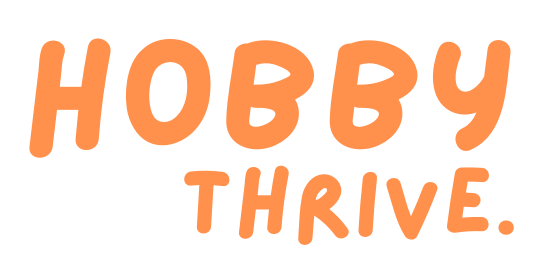3D printing has revolutionised the manufacturing industry, providing innovative solutions for prototyping, production, and customisation. With the advancement of technology, several 3D printing technologies have emerged, each with its own set of advantages and limitations. In this article, we will explore the pros and cons of different 3D printing technologies, shedding light on their applications, materials, cost, speed, and quality.
Fused Deposition Modeling (FDM)
FDM is one of the most popular and widely used 3D printing technologies. It works by extruding a thermoplastic filament layer by layer to create the desired object. The key advantages of FDM include:
Pros:
Affordability:
FDM printers are relatively inexpensive compared to other 3D printing technologies, making them accessible to a broader audience.
Material Variety:
FDM supports a wide range of thermoplastics, including ABS, PLA, and PETG, allowing for versatile applications.
Ease of Use:
FDM printers are user-friendly and straightforward to operate, making them suitable for beginners and hobbyists.
Cons:
Lower Resolution:
FDM prints generally have lower resolution and surface quality compared to other technologies, as layer lines may be visible.
Limited Complexity:
FDM struggles with intricate designs, overhangs, and fine details due to the limitations of extrusion and support structures.
Strength and Durability:
FDM prints may not be as strong or durable as those produced by other technologies due to the layered nature of the process
Stereolithography (SLA):
SLA utilises a liquid resin that is solidified through the use of a laser or UV light source, focusing on specific points to create the desired object. SLA technology offers several benefits:
Pros:
High Precision:
SLA can produce highly detailed and intricate objects with smooth surfaces, making it ideal for applications that require fine features.
Wide Material Selection:
SLA supports a variety of resin materials, including standard, flexible, and biocompatible resins, expanding its range of applications.
Speed:
SLA is generally faster than FDM, as it solidifies entire layers at once instead of printing them one by one.
Cons:
Cost:
SLA printers can be more expensive compared to FDM printers, making them less accessible to budget-conscious users.
Post-Processing:
SLA prints require post-processing, such as rinsing in isopropyl alcohol and UV curing, which adds extra time and effort to the workflow.
Limited Build Volume:
SLA printers often have smaller build volumes compared to FDM printers, limiting the size of objects that can be produced.
Selective Laser Sintering (SLS)
SLS technology uses a high-powered laser to selectively fuse powdered materials, such as nylon or metal, layer by layer, creating robust and complex objects. Here are the pros and cons of SLS:
Pros:
Material Versatility:
SLS can work with a variety of materials, including nylon, TPU, and metals, allowing for the production of functional end-use parts.
Complex Geometry:
SLS is capable of producing intricate designs and complex geometries with high accuracy and structural integrity.
No Support Structures:
SLS does not require support structures, as the unsintered powder acts as a self-supporting material during the printing process.
Cons:
Cost: SLS printers and materials tend to be more expensive compared to FDM and SLA, making it less accessible for personal use or small businesses.
Post-Processing: SLS prints require post-processing to remove excess powder and achieve a smooth surface finish, which can be time-consuming.
Limited Resolution: SLS prints may have slightly rougher surface finishes compared to SLA or FDM due to the graininess of the powdered materials used.
Digital Light Processing (DLP)
DLP is similar to SLA, but instead of using a laser, it employs a digital light projector to cure the liquid resin layer by layer. Let’s look at its pros and cons:
Pros:
Speed:
DLP is known for its fast printing speed, as an entire layer can be cured simultaneously using the digital light projector.
High Resolution:
DLP can achieve high resolution and produce intricate details, similar to SLA technology.
Material Options:
DLP supports a wide range of resin materials, including standard, flexible, and castable resins, providing versatility for various applications.
Cons:
Cost:
DLP printers and resins can be more expensive compared to FDM, making it less accessible for hobbyists and budget-conscious individuals.
Limited Build Volume:
Like SLA, DLP printers often have smaller build volumes, restricting the size of objects that can be produced.
Post-Processing:
DLP prints require post-processing, such as rinsing and UV curing, similar toSLA, adding additional time and effort to the printing process.
Conclusion
Different 3D printing technologies offer unique advantages and limitations, catering to various applications and user requirements. Fused Deposition Modelling (FDM) is affordable and versatile but may lack resolution and surface quality. Stereolithography (SLA) provides high precision and surface finish but can be more expensive and require post-processing. Selective Laser Sintering (SLS) offers material versatility and complex geometry but comes with a higher cost and post-processing requirements. Digital Light Processing (DLP) combines speed and high resolution but can be costly and have limited build volume.
When choosing a 3D printing technology, it is crucial to consider factors such as budget, desired resolution, material options, and the intended application. Each technology has its place in the industry, and understanding their pros and cons helps users make informed decisions. With ongoing advancements in 3D printing, it is expected that these technologies will continue to evolve, offering even more possibilities for innovation and customisation in the future.





